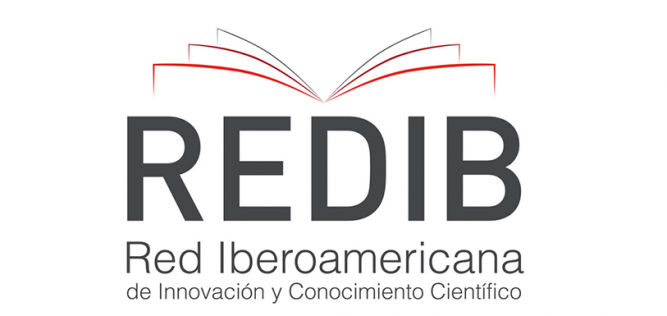Knowledge of bivariate statistics by Portuguese prospective primary school teachers
Knowledge of bivariate statistics by Portuguese prospective primary school teachers
DOI:
https://doi.org/10.21814/rpe.16121Keywords:
Two-dimensional distribution, Linear correlation, Linear regression, Prospective primary school teachersAbstract
The aim of this paper is to analyse the statistics knowledge of a sample of prospective primary school teachers when they solve a task involving a two-dimensional distribution, in relation to the graphic representation, to the linear correlation and to the linear regression. The study involved 50 students, who were attending the 2nd year of the Bachelor in Basic Education at a university in the north of Portugal. The data were collected from the students’ answers through the application of several probability and statistics questions in a formal evaluation environment. In this paper we will be concerned only with the two-dimensional distribution case. Finally, in terms of results, the students were more successful in the graphic representation of the distribution. About half or more students were evaluated correctly in the signal and the intensity of the linear correlation. Finally, the students had many difficulties in the linear regression, when determining the estimation of the value for a variable known the value of the other.
Downloads
References
Arteaga, P., Batanero, C., Cañadas, G., & Contreras, J. M. (2011). Las tablas y gráficos estadísticos como objetos culturales. Números, 76, 55-67.
Barbancho, A. G. (1973). Estadística elemental moderna. Barcelona, España: Ariel.
Batanero, C. (2009). Retos para la formación estadística de los profesores. In J. A. Fernandes, M. H. Martinho, F. Viseu, & P. F. Correia (Orgs.), Actas do II Encontro de Probabilidades e Estatística na Escola (pp. 52-71). Braga, Portugal: Centro de Investigação em Educação da Universidade do Minho.
Bryant, P., & Nunes, T. (2012). Children´s understanding of probability: A literature review (full report). London, UK: The Nuffield Foundation.
Common Core State Standards Initiative. (2010). Standards for mathematical practice. Recuperado de http://www.corestandards.org/
Estepa, A. (2004). Investigación en educación estadística. La asociación estadística. In R. Luengo (Ed.), Líneas de investigación en Educación Matemática (pp. 227-255). Badajoz, España: Servicio de Publicaciones da Universidad de Extremadura.
Estepa, A. (2007). Caracterización del significado de la correlación y regresión de estudiantes de Educación Secundaria. Zetetiké, 15(28), 119-151.
Estepa, A., Gea, M. M., Cañadas, G. R., & Contreras, J. M. (2012). Algunas notas históricas sobre la correlación y regresión y su uso en el aula. Números, 81, 5-14.
Fernandes, J. A., & Freitas, A. (2019). Selection and Application of graphical and numerical statistical tools by prospective primary school teachers. Acta Scientiae, 21(6), 82-97.
Fernandes, J. A., Batanero, C., & Gea, M. M. (2019). Escolha e aplicação de métodos estatísticos por futuros professores dos primeiros anos. In J. M. Contreras, M. M. Gea, M. M. López-Martín, & E. Molina- Portillo (Eds.), Actas del Tercer Congreso Internacional Virtual de Educación Estadística. Granada, España: Universidade de Granada.
Fernandes, J. A., Morais, P. C., & Lacaz, T. V. S. (2011). Representação de dados através de gráficos estatísticos por alunos do 9.º ano de escolaridade. In Anais da XIII Conferência Interamericana de Educação Matemática, Recife, Brasil, 26-30 junho.
Gea, M. M. (2014). La correlación y regresión en bachillerato: Análisis de libros de texto y del conocimiento de los futuros profesores (Tesis doctoral). Universidad de Granada, Granada, España.
Gea, M. M., Batanero, C., Fernandes, J. A., & Gómez, E. (2014). La distribución de datos bidimensionales en los libros de textos de matemáticas de Bachillerato. Quadrante, 23(2), 147-172.
Gea, M., Batanero, C., & Roa, R. (2014). El sentido de la correlación y regresión. Números, 87, 25-35.
Godino, J. D. (2002). Un enfoque ontológico y semiótico de la cognición matemática. Recherches en Didactique des Mathématiques, 22(2/3), 237-284.
Godino, J. D. (2017). Construyendo un sistema modular e inclusivo de herramientas teóricas para la educación matemática. In J. M. Contreras, P. Arteaga, G. R. Cañadas, M. M. Gea, B. Giacomone, & M. M. López-Martín (Eds.), Actas del Segundo Congreso International Virtual sobre el Enfoque Ontosemiótico del Conocimiento y la Instrucción Matemáticos. Recuperado de http://enfoqueontosemiotico.ugr.es/civeos.html
Godino, J. D., & Batanero, C. (1994). Significado institucional y personal de los objetos matemáticos. Recherches en Didactique des Mathématiques, 14(3), 325-355.
Godino, J. D., Batanero, C., & Font, V. (2007). The onto-semiotic approach to research in mathematics education. ZDM. The International Journal on Mathematics Education, 39(1-2), 127-135.
Godino, J. D., Giacomone, B., Batanero, C., & Font, V. (2017). Enfoque ontosemiótico de los conocimientos y competencias del profesor de matemáticas. Bolema, 31(57), 90-113.
Hill, H. C., Ball, D. L., & Schilling, S. G. (2008). Unpacking pedagogical content knowledge: Conceptualizing and measuring teachers' topic-specific knowledge of students. Journal for Research in Mathematics Education, 39(4), 372-400.
McKenzie, C. R. M., & Mikkelsen, L. A. (2007). A Bayesian view of covariation assessment. Cognitive Psychology, 54(1), 33-61.
Ministério da Educação e Ciência (2014). Programa de Matemática A – Ensino secundário. Lisboa, Portugal: Ministério da Educação e Ciência.
Ministério da Educação e Ciência. (2013). Programa de Matemática para o ensino básico. Lisboa, Portugal: Ministério da Educação e Ciência.
Ministerio de Educación, Cultura y Deporte. (2015). Real Decreto 1105/2014, de 26 de diciembre, por el que se establece el currículo básico de la Educación Secundaria Obligatoria y del Bachillerato.
Moritz, J. (2004). Reasoning about covariation. In D. Ben-Zvi & J. Garfield (Eds.), The challenge of developing statistical literacy, reasoning and thinking (pp. 221-255). Dordrecht, Netherlands: Kluwer.
Mugabe, A. D., Fernandes, J. A., & Correia, P. F. (2012). Avaliação da associação estatística num diagrama de dispersão por estudantes universitários. In H. Pinto, H. Jacinto, A. Henriques, A. Silvestre, & C. Nunes (Orgs.), Atas do XXIII Seminário de Investigação em Educação Matemática (pp. 403-414). Lisboa, Portugal: Associação de Professores de Matemática.
Quintas, S., Ferreira, A., & Oliveira, H. (2015). O conhecimento didático de estatística de duas professoras de matemática sobre dados bivariados. Bolema, 29(51), 284-306.
Shulman, L. S. (1986). Those who understand: Knowledge growth in teaching. Educational Researcher, 15(2), 3-14.
Zieffler, A. S. (2006). A longitudinal investigation of the development of college students’ reasoning about bivariate data during an introductory statistics course (Tese de doutoramento). Universidade de Minnesota, Minnesota, EUA.
Downloads
Published
How to Cite
Issue
Section
License
1. The authors preserve their authorship and grant the Portuguese Journal of Education the right to the first publication. The work is licensed under Creative Commons Attribution License that allows sharing the work with the acknowledgment of initial authorship and publication in this Journal.
2. The authors have the right to take additional contracts separately, for non-exclusive distribution of the published version of their work (e.g. to deposit in an institutional repository or as a book chapter), acknowledging the initial authorship and publication in this Journal.
3. The authors have the permission and are stimulated to post their work online (e.g. in an institutional repository or on their personal website). They can do this at any phase of the editorial process, as it may generate productive changes, as well as increase impact and article citation (see The Open Citation Project).
The work is licensed under Attribution-ShareAlike 4.0 International (CC BY-SA 4.0)



















